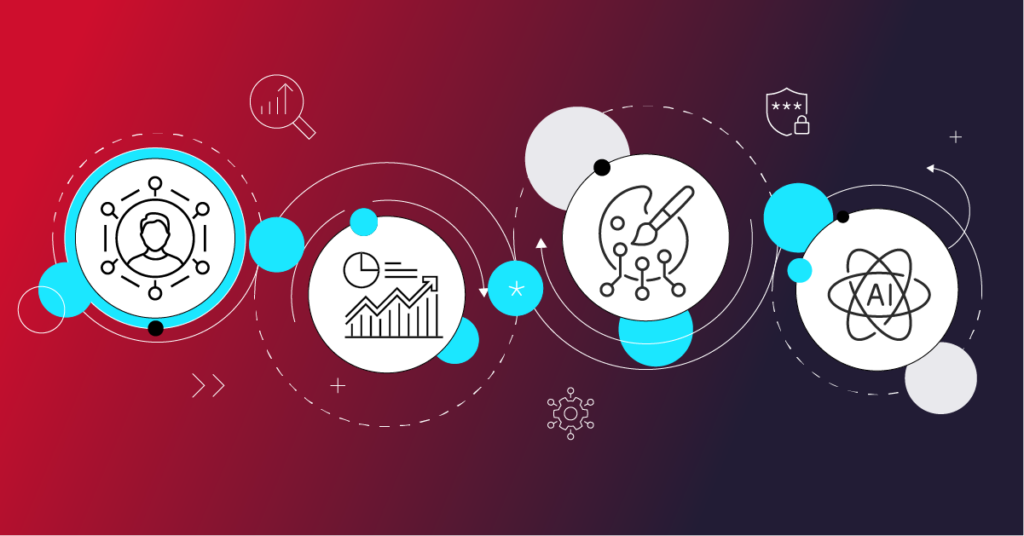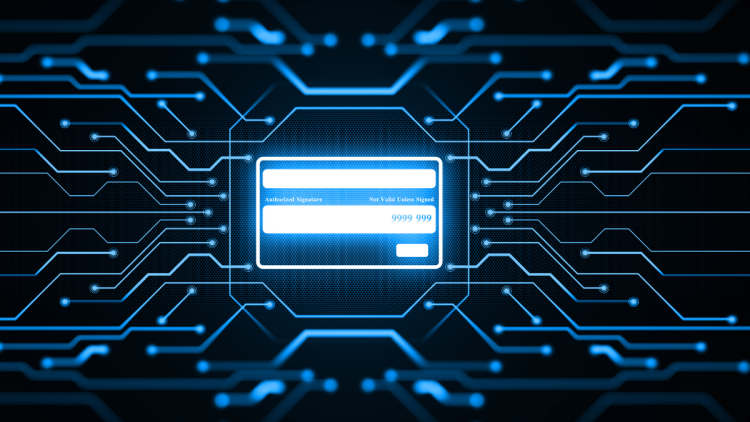Introduction
In the rapidly evolving world of digital transformation, blockchain technology has emerged as a revolutionary force. While blockchain’s initial applications were largely confined to cryptocurrency and enterprise business models, its potential extends far beyond these domains. Governments and public sector institutions are beginning to recognize the immense value of blockchain technology in enhancing transparency, security, and efficiency across various public services.
Blockchain, by nature, is a decentralized and immutable ledger that records transactions in a transparent and secure manner. These features make blockchain a powerful tool for addressing some of the most pressing challenges faced by governments and public sector organizations today, such as bureaucratic inefficiencies, data privacy concerns, fraud prevention, and trust issues.
This article will explore how enterprise blockchains—private, permissioned blockchains designed for businesses—can be applied to government functions, public administration, and other public sector services. We will examine real-world use cases, the benefits of adopting blockchain, and how this technology can lead to more efficient governance.
1. Blockchain Technology in Government: An Overview
1.1 The Role of Blockchain in the Public Sector
Governments and public organizations are under constant pressure to improve their operations, deliver public services efficiently, and increase transparency in the face of growing public scrutiny. Traditional systems of public administration are often bogged down by complex bureaucracies, manual processes, and centralized databases that are prone to errors, fraud, and delays.
Blockchain offers a unique solution to these challenges. By providing a secure, transparent, and immutable record of transactions and interactions, blockchain can reduce inefficiencies, streamline workflows, and facilitate secure digital interactions between the public and government agencies.
Furthermore, enterprise blockchains—unlike public blockchains such as Bitcoin—offer more control, privacy, and permissioned access, making them suitable for the sensitive data handled by government institutions.
1.2 Key Features of Enterprise Blockchain for Governments
Several features of enterprise blockchains make them particularly well-suited for governmental and public sector applications:
- Transparency and Traceability: Blockchain’s transparent ledger enables all participants to view transactions in real-time, providing a high degree of accountability.
- Security and Data Integrity: The use of cryptography and decentralization ensures that data is tamper-proof and cannot be easily manipulated.
- Efficiency and Cost Savings: Smart contracts and automated processes can help reduce the administrative overhead and speed up government services.
- Data Privacy: Enterprise blockchains can implement privacy features, ensuring that sensitive information is only accessible to authorized individuals.
2. Use Cases of Enterprise Blockchain in Government and Public Services
2.1 Public Records Management and Digital Identity
One of the most promising applications of blockchain in government is the management of public records, such as birth certificates, land deeds, marriage licenses, and other important documents. Traditionally, these records have been stored in centralized databases, which are vulnerable to data breaches, tampering, and inefficiencies.
Blockchain offers a secure and immutable way to store and verify public records. Each record can be assigned a unique cryptographic signature that ensures its authenticity and prevents unauthorized alterations. This would not only streamline public administration but also create an easily accessible, transparent system for citizens and government officials alike.
Example: Estonia’s e-Residency Program
Estonia is a trailblazer in utilizing blockchain technology for digital identity management and e-government services. The country’s e-Residency program allows global citizens to create a digital identity and access a range of government services, including company registration, banking, and taxation, all through a secure, blockchain-backed platform. By using blockchain to store digital identities, Estonia has greatly reduced the risk of identity fraud and identity theft while increasing efficiency in administrative processes.
2.2 Voting Systems: Ensuring Integrity in Elections
Elections are a cornerstone of democratic governance, but the integrity of voting systems is often compromised by issues like voter fraud, misinformation, and delayed results. Traditional voting systems—whether in-person or digital—are susceptible to tampering and errors, which can undermine trust in electoral outcomes.
Blockchain can provide a secure, transparent, and tamper-resistant voting mechanism. By using blockchain to record votes, governments can ensure that each vote is verified, traceable, and immutable, reducing the risk of fraud or manipulation. Blockchain-based voting systems can also facilitate remote voting while ensuring that only eligible individuals are able to cast ballots.
Example: West Virginia’s Blockchain-Based Voting Pilot
In 2018, West Virginia conducted a blockchain voting pilot for military personnel stationed overseas. The pilot used a mobile app that allowed voters to cast their ballots using a blockchain ledger. The system was designed to ensure secure and verifiable voting while maintaining privacy. Although the pilot was small, it demonstrated the potential of blockchain to revolutionize elections by providing a secure, accessible, and efficient voting solution.
2.3 Supply Chain Transparency for Public Procurement
Government procurement is often marred by issues of corruption, fraud, and lack of accountability. Blockchain can provide an effective solution by increasing transparency and traceability in public procurement processes. Governments can use blockchain to record every transaction and contract in public procurement, from initial bidding to final delivery.
This increased transparency ensures that the allocation of public funds is monitored, and public projects are executed as per contractual obligations. It also reduces the likelihood of corrupt practices, such as bribery or kickbacks, by creating a publicly accessible record of each transaction.
Example: Dubai’s Blockchain-Backed Procurement System
Dubai has implemented a blockchain-based system for procurement and supply chain management to streamline its public sector. By recording every purchase order, contract, and delivery on the blockchain, Dubai aims to improve efficiency, transparency, and accountability in government spending. This initiative is part of Dubai’s broader strategy to become a global leader in blockchain innovation.
2.4 Healthcare Services: Secure Patient Data Management
The healthcare sector is one of the most sensitive areas of government operation, with patient data being subject to strict privacy regulations and confidentiality requirements. Enterprise blockchain can help governments and healthcare providers improve the security and efficiency of healthcare data management.
By utilizing blockchain, patient records can be securely stored and accessed by authorized healthcare providers in real-time. The decentralized nature of blockchain ensures that no single entity has control over the data, providing patients with greater privacy and control over their health records.
Example: MedRec: Blockchain for Health Record Management
MedRec, a blockchain-based platform developed by MIT, aims to revolutionize the way healthcare data is managed. By using blockchain to store patient data, MedRec enables patients to control who has access to their medical records. The system is designed to increase efficiency and reduce administrative burdens on healthcare providers while ensuring that sensitive patient data remains secure and tamper-proof.

3. Benefits of Blockchain for Government and Public Sector
3.1 Enhanced Transparency and Trust
Blockchain’s immutable ledger ensures that all transactions and records are visible to authorized parties, enhancing transparency. Governments can use this feature to increase public trust, especially in areas such as procurement, taxation, and elections.
3.2 Improved Efficiency and Cost Savings
By automating processes through smart contracts and reducing the need for intermediaries, blockchain can dramatically reduce the cost and time associated with government services. For example, land title registration, which traditionally requires multiple intermediaries, can be simplified and streamlined using blockchain, eliminating bureaucratic delays.
3.3 Enhanced Data Security and Privacy
Blockchain’s cryptographic foundation ensures that government data is secure and tamper-resistant. For public services such as welfare distribution or tax collection, sensitive data can be encrypted and stored on the blockchain, making it much harder for malicious actors to alter or steal the data.
3.4 Reducing Fraud and Corruption
By providing a transparent, traceable record of transactions, blockchain helps to reduce the risk of fraud and corruption in public service delivery. For example, blockchain can ensure that government funds allocated for public health or education projects are used properly, without siphoning off by corrupt actors.
4. Challenges and Considerations
While blockchain holds immense potential for the public sector, several challenges must be addressed:
- Scalability: Public sector organizations handle massive amounts of data, and ensuring that blockchain systems can scale to meet these demands is a critical challenge.
- Interoperability: Government agencies often use a range of legacy systems. Ensuring that blockchain solutions integrate seamlessly with existing infrastructures is essential for successful adoption.
- Regulatory and Legal Concerns: Governments must navigate the complex legal and regulatory landscapes when implementing blockchain technology, especially concerning data privacy and compliance.
Conclusion
The potential of enterprise blockchain technology in government and public services is vast. By enhancing transparency, security, and efficiency, blockchain can help governments improve public service delivery, combat corruption, and increase public trust. From e-voting systems to public procurement and healthcare data management, blockchain offers innovative solutions to some of the most pressing challenges in public administration.
As governments continue to explore and adopt blockchain technology, the future of public sector governance looks set to be more efficient, secure, and transparent, paving the way for digital government services that better meet the needs of citizens.

















































